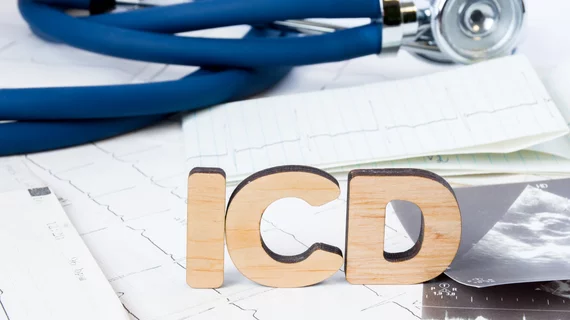How trial results, guidelines affect the way physicians program CIEDs
A Journal of the American Heart Association study focused on the programming safety of cardiac implantable electronic devices (CIEDs) suggests the publication of clinically meaningful trial results and professional recommendations translates poorly into real-world practice, penetrating just a fraction of a field that might benefit from added guidance.
Recent practice points for the use of CIEDs, which include implantable cardioverter-defibrillators (ICDs) and cardiac resynchronization therapy devices (CRT-Ds), have emphasized quality-of-care measures like appropriate candidate selection, Niraj Varma, MD, PhD, et al. wrote in JAHA.
But the downstream management of such devices received little attention before results from the MADIT-RIT (Multicenter Automatic Defibrillator Implantation Trial-Reduce Inappropriate Therapy) trial were published, revealing for the first time that CIED programming can affect patient morbidity and mortality. In MADIT-RIT, CIEDs programmed to a high-rate cutoff of 200 beats per minute or a 12-second delay delivered the fewest inappropriate shocks.
Follow-up studies confirmed MADIT-RIT results, spurring the 2015 publication of an expert consensus statement for optimal ICD programming backed by major institutions like the Heart Rhythm Society and European Heart Rhythm Association. The statement assigned a class 1A recommendation to optimization programming, setting generic parameters for the slowest tachycardia therapy zone limit to 185 beats per minute and tachyarrhythmia detection duration to at least 6 seconds.
“The speed and extent to which these publications affect real-world practice is relatively unknown and little investigated,” Varma, of the Cleveland Clinic, and colleagues wrote. “In comparison, pharmacological therapy among patients with heart failure has been well-examined, and indicates a gap between evidence and practice which may persist for years.”
Using Boston Scientific’s ALTITUDE database of 232,982 patients, Varma and his team assessed changes in individual CIED programming standards both after MADIT-RIT results were released and after the expert consensus statement was published. The authors analyzed data from 2008 to 2017.
The researchers said prevalence of MADIT-RIT-specific settings before the study’s publication was less than 1 percent, but in the year after results were posted that number jumped to 13.6 percent. Prevalence increased an additional 6 percent in the five years that followed, but it slowed notably.
Among 91,171 patients with pre-existing implants, 64.4 percent underwent at least one in-person device reprogramming after trial publication, but less than 2 percent were reprogrammed to MADIT-RIT settings. Reprogramming to consensus statement parameters of 185 beats per minute or a 6-second delay after MADIT-RIT results were released was a more popular choice (those settings were present in 57.4 percent of patients in the year following MADIT-RIT compared to 40.2 percent of patients at baseline), though the statement hadn’t yet been released.
Just over 70 percent of patients were using the 185 beats per minute/6-second threshold in 2015, the year the statement was published, but that rose to just 73.2 percent the next year, suggesting the guidelines had a minor incremental effect on actual practice.
“The virtually neutral response to international recommendations is startling,” Varma et al. said. “One earlier study had called for such a consensus statement, anticipating that this would increase the practice of evidence-based shock reduction programming, but herein we show that this did not occur. Lack of optimized programming, according to the consensus statement (if not MADIT-RIT), persisted in almost 30 percent of patients one year after announcement of recommendations.”
The authors said it’s important to come up with real solutions to improve optimized programming in community practice, but even if manufacturers changed their nominal settings in all future products, that wouldn’t account for programming adjustments that will likely be necessary in patients whose devices were implanted years earlier. Studies like these, which leverage ever-updating data like Boston Scientific’s to track CIED safety, could help.
“Capitalizing on the full therapeutic potential of ICDs and CRT-Ds demands not only appropriate patient selection for implant but also attention to downstream CIED management, including optimized programming adjusted according to changing needs,” Varma and co-authors wrote. “Remote monitoring databases generated by connected devices may be leveraged to inform of device-specific programming and required changes, without need for in-clinical routine examination.”

